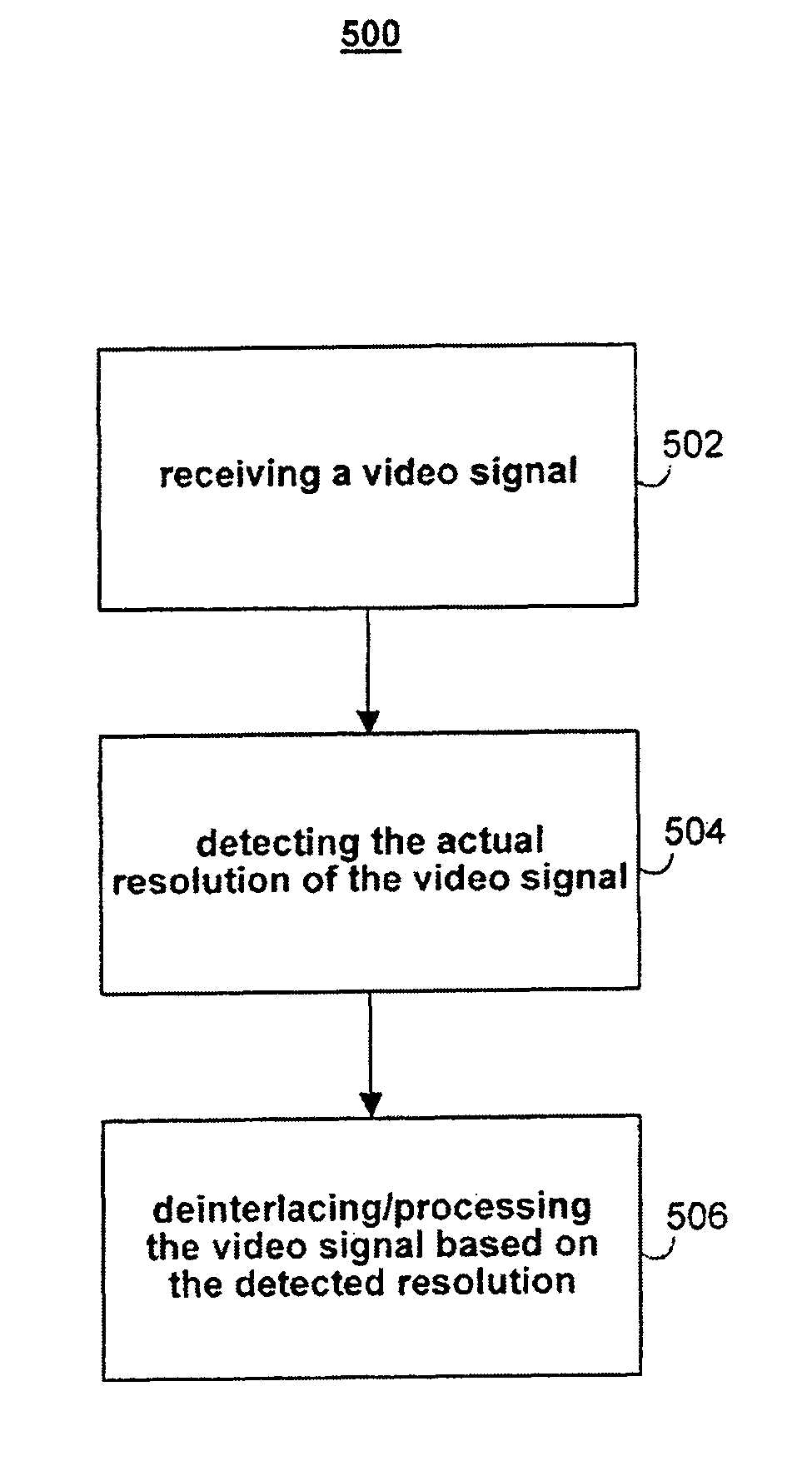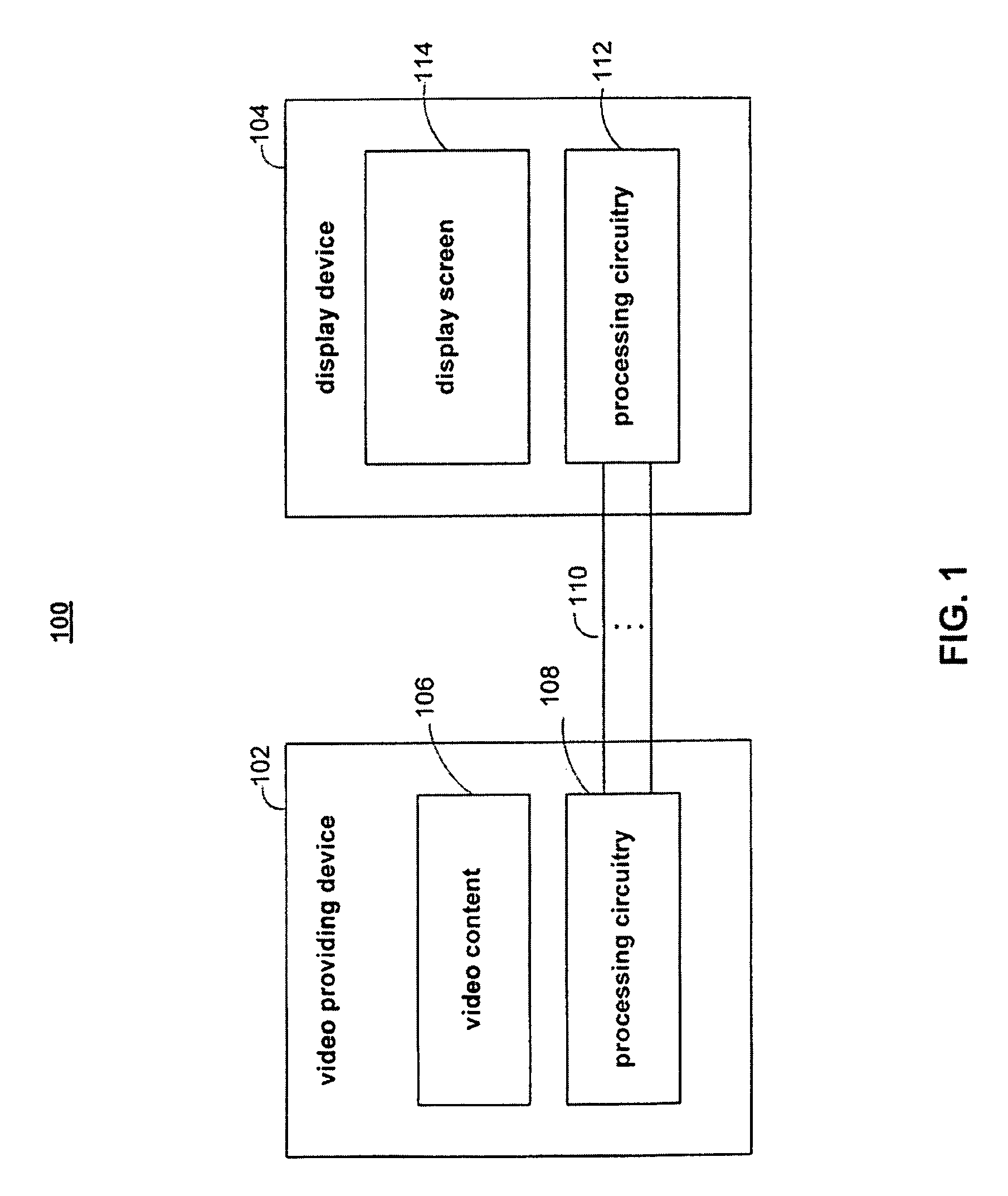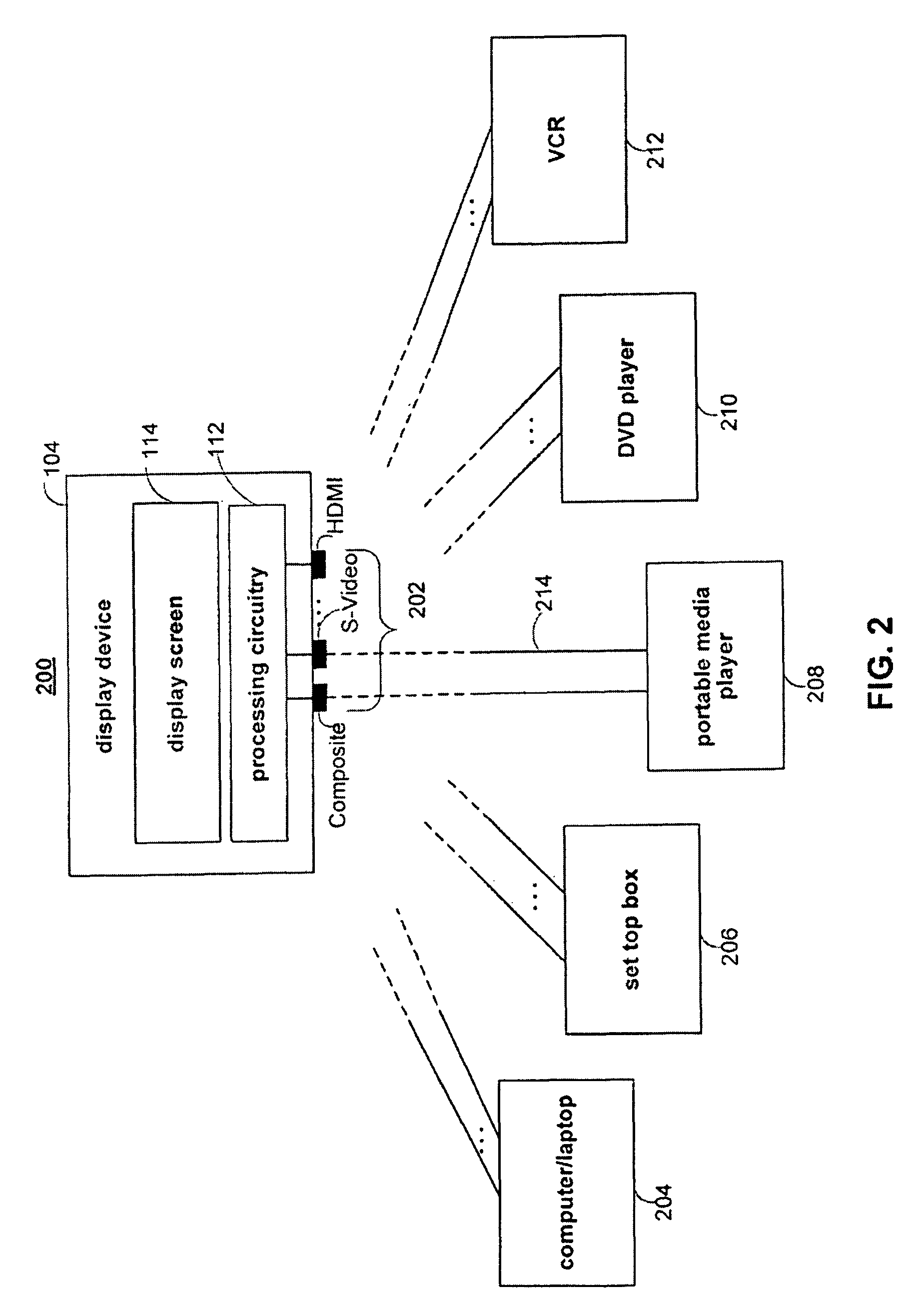Methods and systems for improving low-resolution video
a low-resolution video and video technology, applied in the field of methods and systems for improving low-resolution video, can solve the problems of disproportionate amount of compressed video data to be used on backgrounds and other still images, lower resolution of online video, and inability to change frame-by-frame video, etc., to improve the improve the visual appearance of low-resolution video, and improve the effect of low-resolution video
- Summary
- Abstract
- Description
- Claims
- Application Information
AI Technical Summary
Benefits of technology
Problems solved by technology
Method used
Image
Examples
Embodiment Construction
[0026]FIG. 1 shows illustrative system 100 for providing video content to a display device. Display device 104 in system 100 may be a television or any other device that can display video. Video content 106 may be provided by video providing device 102. Video providing device 102 may be a portable media player, a DVD player, a set top box, or any other suitable device that may provide video. Video content 106 may be stored in memory within video providing device 102, or video providing device 102 may obtain video content 106 directly from an external source (e.g., the Internet, a DVD, etc.). Video content 106 may have any suitable resolution (e.g., 320×240, 160×120, 640×480, etc.), may use any suitable encoding (e.g., uncompressed, H.264, MPEG, etc.), and may have any other suitable video characteristics.
[0027]Video providing device 102 includes processing circuitry 108. Processing circuitry 108 converts media content 106 into a video signal suitable for transmission to display devi...
PUM
 Login to View More
Login to View More Abstract
Description
Claims
Application Information
 Login to View More
Login to View More - R&D
- Intellectual Property
- Life Sciences
- Materials
- Tech Scout
- Unparalleled Data Quality
- Higher Quality Content
- 60% Fewer Hallucinations
Browse by: Latest US Patents, China's latest patents, Technical Efficacy Thesaurus, Application Domain, Technology Topic, Popular Technical Reports.
© 2025 PatSnap. All rights reserved.Legal|Privacy policy|Modern Slavery Act Transparency Statement|Sitemap|About US| Contact US: help@patsnap.com



